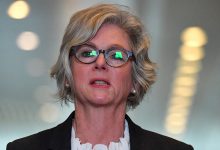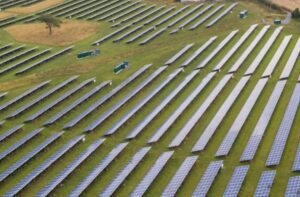The federal crossbench has called on the Morrison government to provide support for community renewable energy projects, saying that it was critical for ensuring local and regional communities were able to benefit from a ‘boom’ in wind and solar energy investment.
Independent MP for Indi, Helen Haines, moved the motion on Monday, which calls on the Morrison government to establish a dedicated agency to support the creation of community renewable energy projects, to ensure local communities can benefit from what the CSIRO estimates will be $1 trillion spent on energy through to 2050.
Haines’ electorate is home to the ground-breaking Yackandandah community project pushing for 100 per cent renewables, and the motion was seconded by Independent member for Warringah, Zali Steggall, who ousted former PM Tony Abbott in last year’s election.
The motion calls on parliament to “[acknowledge] that ‘community energy’, which is where a renewable energy project is developed by, owned by or delivers benefit to local communities, offers a compelling model for capturing the immense benefits of renewable energy, including jobs and investment, for local communities in regional Australia.”
The motion also calls on the Morrison government to provide direct financial and technical support for local communities to develop community renewable energy projects, and to establish a “dedicated national community energy agency”, to support the development of new community run renewable energy projects.
Haines said that regional Australia would play a predominant role in the transition to clean energy, and it was important that regional communities were able to directly benefit from the opportunities created in this transition.
“Australia’s future is renewable, and Australia’s renewables will be built almost entirely in regional Australia. These aren’t political statements, they are the sober findings of the engineers at the Australian Energy Market Operator,” Haines said. “Who have mapped out a technical blueprint, the Integrated System Plan for Australia’s electricity needs over the next 20 years.”
“That plan shows that in that timeframe, over 60 per cent of our coal fleet will reach the end of its life. It will retire, it will breakdown, it will be gone. Because the cost of renewables, even when you add the cost of storage, are cheaper than fossil fuels, these coal power stations will be replaced by solar and wind.”
“As we look for ways to rebuild our economy from the crisis that we are now in, harnessing this 21st-century gold rush for the benefit of everyday people is one of our greatest opportunities. It is right here, right now, and it is before us if we grasp it,” Haines added.
“The renewable boom is exciting, but it should happen with locals, not to locals. We have to aspire not just to a renewable energy future, but also to a community energy future,” Haines added.
While moving the motion, Haines flagged that she would soon launch a plan for how governments can support the development of community energy projects, to ensure that local communities were able to invest and benefit from the rapid growth of renewable energy in Australia.
“It is at this crucial moment for our country that we need a plan to ensure every regional community can partake in this boom. Over recent months I’ve been working with communities right across Australia on a plan to do just that; to ensure that renewable energy not only creates local jobs, but sets us up for a generation of shared prosperity,” Haines said.
“On September 23rd, I will launch that plan.”
Haines’ motion looks set to receive support from the Labor opposition and other progressive members of the crossbench, but is unclear whether the Morrison government will support the motion, as Liberal MPs spoke both in support and in opposition to investment in renewables in response to the motion, but it appears unlikely.
“Community energy can make an enormous contribution to Australia, from the bush to coastal cities and will accelerate job creation and shared values,” Independent MP Zali Steggall said.
The successful 100% Renewable Yackandandah community energy project aims to transition the regional Victorian town to producing all of its electricity from community owned solar projects and through the establishment of a dedicated microgrid.
The model is set to be expanded and rolled out across other regional Victorian towns and has been supported by the creation of the community owned electricity retailer, Indigo Power, which aims to replicate the Yackandandah model.
The Victorian Community Power Hub is an initiative of the Victorian state government, and has supported the development of three pilot hubs in Ballarat, Bendigo and the Latrobe Valley. The hubs supported the deployment of 15 community energy projects, installing a total of 1.35MW of renewable energy generation capacity. The $1.16 million government initiative helped $25.6 million in benefits to be generated across the regional communities.
The motion moved by Haines will likely be put to a vote later in the week.








